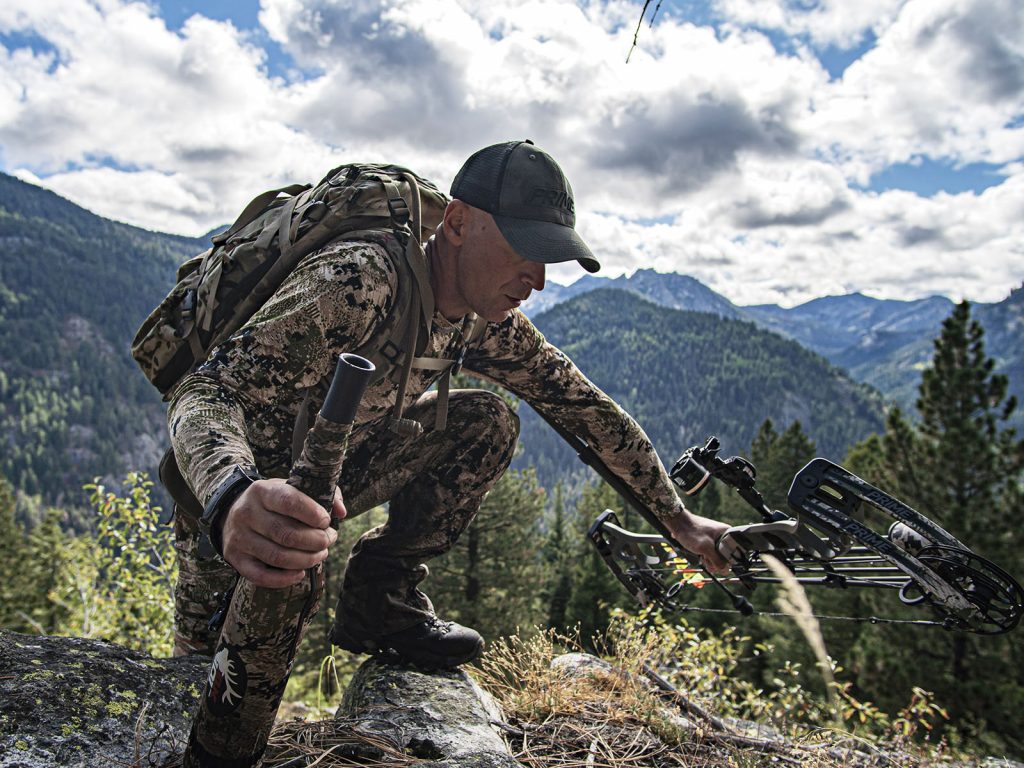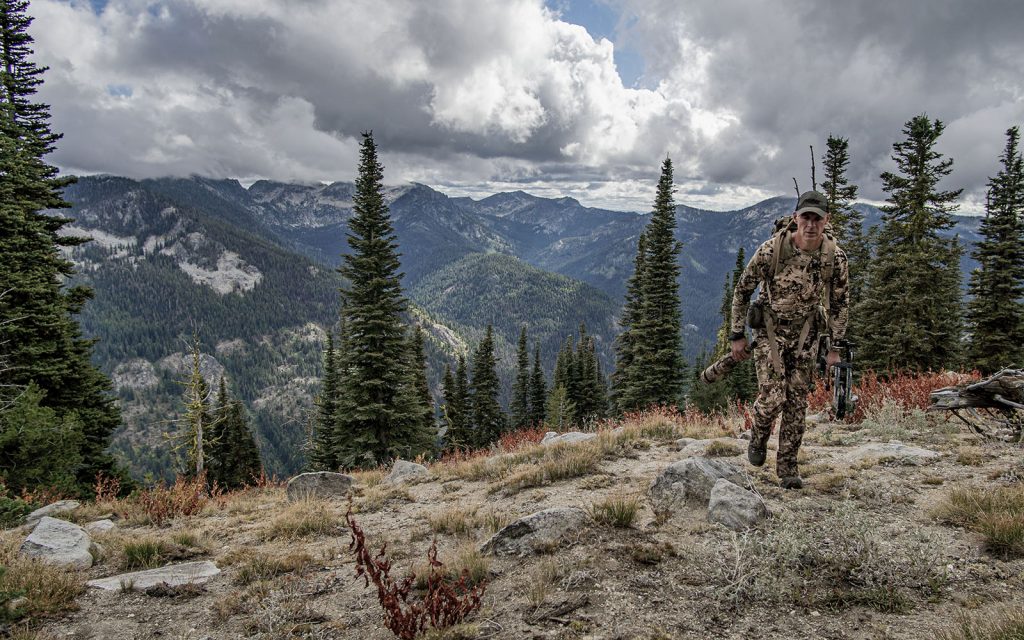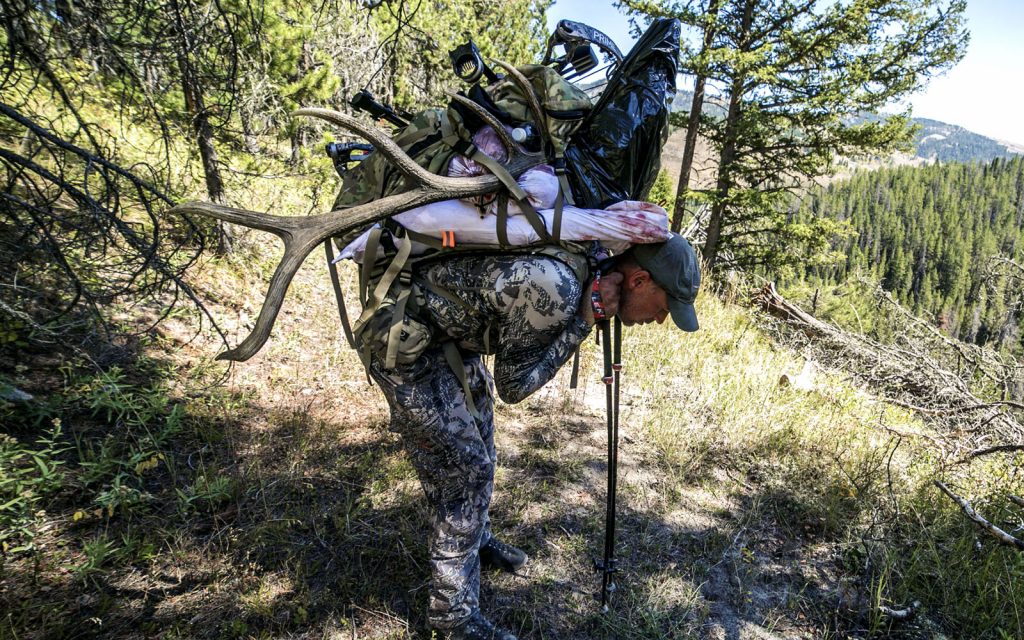
MODULE 3 - PHYSICAL CONDITIONING
CHAPTER 1: WHY DO I NEED TO WORKOUT?

There is no denying that you will be a better elk hunter if you are in better shape. Improving your physical conditioning will absolutely increase your opportunities in the elk mountains. I am not saying that you can’t be successful if you aren’t in great shape – I’m simply saying that if you get into better shape, you will have more opportunities for success. Additionally, you will be less likely to suffer an injury or experience as much pain during your hunt.
I completely understand the drastic – and sometimes bitter – division between those who work out at the gym and those who don’t. Please do not take this information on Physical Conditioning as me saying you need to spend more time in the gym. That is not my platform at all. If you are already in good shape, that is awesome. The majority of the most well-conditioned elk hunters I know have never stepped foot inside a gym – the mountains are their training grounds. Unfortunately, many of us have jobs and lifestyles that prevent us from spending several days a week in the mountains getting in shape for elk hunting, so we do what we can with the limited time we have to maximize those efforts. And anything we do to improve our conditioning now is going to pay off during elk season.
A PHYSICAL DEMAND
Elk hunting is a physical activity. Elk live in rough country, and for an elk hunter to best be able to find, chase, hunt, and hopefully pack out an elk, it requires a certain level of physical preparation. It is certainly possible to do all those things without preparing physically, but I would definitely not recommend it.

My typical day of elk hunting involves getting up well before daylight and beginning my hike into a predetermined area. Keeping in mind the thermals, I usually start out at a lower elevation and climb to where I hope to find the elk. The morning hikes are usually brisk, as I am trying to get into the elk before the morning thermals begin to get inconsistent. On average, I would venture to say that I usually hike at least a mile (sometimes 3-5 miles) to get into these areas. From there, I slow my pace slightly and begin searching for elk. However, I am still on the move and covering a lot of country trying to find the elk. If I find elk, I hunt them until I either kill one or I mess up. If I mess up, I start hiking again, looking for another elk. I continue this pattern until it’s time to head back to camp.
Most days, I would say I average between 8-10 miles of hard hiking in fairly rugged terrain. Most of my hunts are 6-8 days long, so it’s not uncommon to cover 70-80 miles in a week. Most of those miles also involve carrying some kind of a load on my back – either a day pack of 15-20 pounds, or a bivy pack of 35-40 pounds.
During my weeklong hunt, if I manage to kill an elk, I spend an hour or two bent over and tugging at an 800 pound animal lying on the ground as I work to get the meat into game bags and ready to pack off the mountain. That chore alone is physically demanding! However, my physical conditioning is truly challenged as I begin packing elk quarters off the mountain. For two people, this process usually involves a minimum of two heavy trips, each with at least 70-80 pounds per load. Try doing this in one trip, and the weight of those loads is doubled. Even with three people, a single trip will result in over 100 pounds on your backs! Either way, it is not uncommon to be tasked with carrying VERY HEAVY loads for long distances, an experience that will test every muscle, tendon, and joint in your body, as well as your heart, lungs, and mind.
CONFIDENCE AND MENTAL STRENGTH
Keep in mind that no amount of physical conditioning will ever make a tough packout “easy”, but it can make it less painful. In addition to the direct benefits that come from being in shape, there are a couple of indirect benefits that come from physical conditioning that I feel are vital: confidence and mental strength.
I mentioned in the beginning of this Module that being in shape will provide more opportunities. That is a simple fact. The farther you hike, the more country you cover, the more you are able to access remote country, the higher the odds of you having encounters with elk.
Better Conditioning = More Encounters = More Opportunities = More Chances For Success
Plus, by being willing to go where others won’t go, you are putting yourself into areas where elk are less pressured, and often times, more willing to respond to and come in to your calling. You are able to separate yourself from the competition from other hunters (i.e., pressure) who aren’t willing to work as hard to get into these more remote areas. Later in the season, the elk have retreated to their hiding spots to escape the pressure general rifle seasons bring, which means those who are willing to put in more work are going to reap more rewards.

Confidence in your physical abilities will reduce and eliminate many of the barriers that prevent many elk hunters from dropping into a steep drainage when they hear a bugle. That confidence will push you over the next ridge, as you won’t be worried about how you are going to get the elk out when you kill it. That confidence will propel you into an aggressive approach, and enable you to push up the mountain, even when your legs and lungs are screaming for you to stop. Remove that confidence, and you’ll be hiking back to camp every morning at 9:30. You’ll be walking away from the thick, nasty canyons where elk seek refuge when they get pressured. And you’ll be using the excuse that the elk was a runner and there was no way anyone was going to catch up to him. You will have eliminated multiple chances for success before they even began to materialize. Being in better elk shape brings confidence, and confidence allows you to create more opportunities.
In addition to confidence, an elk hunter has to have a certain level of mental strength – a certain level of persistence – and the ability to push on. As crazy as it may sound, it is usually our minds that tell us to quit, long before our bodies do. Actually, our bodies may sound some alarms, but with a strong mind that has been forged in the fires of conflict, we can push our bodies to do some pretty amazing things. A strong, confident mind can convince the body to keep going, even when it feels like there isn’t any fuel left in the tank. And that mental fortitude comes from pushing yourself physically throughout the year – not just for one week each year. Physical conditioning will build your confidence in your physical abilities, as well as your mental fortitude. And when it comes to elk hunting, that is vital.
Physically, there is no doubt that you will be tested during a week of elk hunting. What many elk hunters aren’t prepared for, however, is the mental testing they will be subjected to on a daily basis. Look, elk hunting isn’t easy. Success rates are low. You will fail in some degree pretty much every day you are elk hunting. Those failures are the pivoting point between defeat and your ultimate success. Being able to pick yourself up time and time again and learn from the failures on a continual basis is what makes an elk hunter successful.
I tried one season to keep track of how many times I failed before I was ultimately successful. I don’t think I even made it to lunch time on day one before I quit keeping track. If you consider the hours spent and miles hiked without hearing a bugle; the bugles you hear that you never get close to; the elk you get close to but never see; the elk you see but never get a shot at; the elk you get a shot at but miss; there will be many obstacles that have you throwing your hands up in frustration, usually on a daily – if not hourly – basis. However, success is always waiting just over the next ridge for the elk hunter who is able to learn from the failure and shrug it off. It is found in the deepening shadows at last light, or in the middle of the day when your eyes are heavy and your body is screaming at you to stop and take a nap. It is found on the last evening of the last day, or a mere matter of minutes after a clean miss on a chip shot. Success is out there, waiting for you to find it. The more physical and mental confidence and strength you have, the better able you will be to chase down not only the elk, but the success that is waiting just beyond the next sunset or the distant ridge.
STRENGTH AND ENDURANCE

OK, sorry, I got a little swept up in inspiration there. Back to reality…
You will sweat on your elk hunt. You will use a full range of muscles. Your lungs will burn and your heart will pound. These are facts. So, let’s do something now to prepare for – and minimize the effects of – these conditions.
At the beginning of this Module, I mentioned that every elk hunter is different, and the level of physical conditioning each person will be able to achieve is individual. Because of that, there is not a single workout program that is going to work for everyone. We’ll get into that in more detail in the next Chapter, but before we do, let’s look at what we’re actually trying to accomplish, regardless of what program we use.
Elk hunting involves the following daily exercises:
-Hiking long distances in steep terrain for long periods of time for several days (Endurance)
-Carrying heavy loads in steep terrain (Strength)
A combination of strength and endurance is an important recipe for physical conditioning for elk hunting. Additionally, working the right muscle groups that will benefit you in elk country is important. Posting selfies of your biceps on Instagram each day isn’t going to impress the elk, and it isn’t going to conquer any mountains. If you want to be ready to attack the mountain, you’re going to need to focus on the following muscle groups:
-Back
-Shoulders
-Core
-Legs
I know, those aren’t the glorious muscle groups, but for elk hunting, they are the ones that you’re going to need the most. And the more you can work them in unison, the better conditioned they will be to work together, which is what they must do on the mountain. Isolating muscle groups is great for building a nice physique, but when it comes to elk hunting, it isn’t always as effective as finding ways to work multiple muscle groups simultaneously.
In addition to working those muscle groups, your lungs need to be conditioned. An element of cardio is going to be important to incorporate into your program to ensure your muscles are getting the oxygen they need to perform at the times they need it most. If you can build cardio into your muscle conditioning, even better.
Ultimately, you are the captain of your own physical conditioning. The harder you push yourself in the off-season, the harder you will be able to push yourself during the season. Achieving something of great value takes a great investment. Beyond the world of elk hunting, there is great value in being physically fit. Your overall quality of life will be improved. Elk hunting can be a great source of motivation for getting into better shape, but the rewards certainly extend well beyond a week in elk country.
If you’re ready to find a workout program that will fit your lifestyle and help you get into shape for elk season, click ‘Next Chapter” Below to Continue on to Chapter 2.





